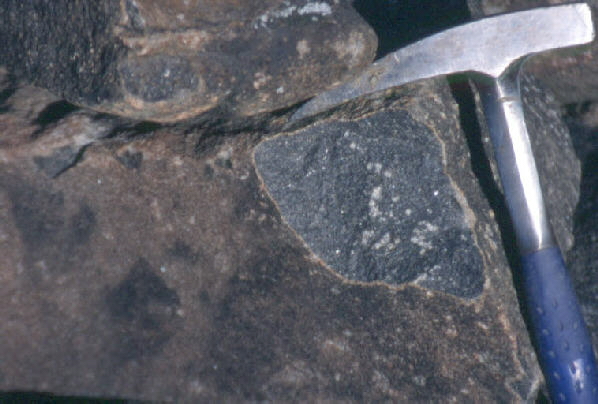My knowledge of Gaelic mythology is a bit limited but it is interesting to see where geology, Gaelic mythology, Captain Cook and Tweed heads have something in common. I’ve not been to Ireland or Scotland but I’ve experienced a feature that is quite famous in these countries that is also present on the northern rivers.
 |
| Fingal Head, clearly showing the basalt columns |
To understand the name of Fingal Head you need to know about the story of the Giants Causeway in Ireland and Fingal’s Cave in Scotland. I’m not a good story teller so here is a link (if this link is still not working try this one instead). My summing up of the story is that one of the two warring giants built a causeway to the other side of the Irish Sea so that he could fight the other. The other giant tore it down so that only each side of the causeway remains, one in Northern Ireland the other, Western Scotland. Local tourist information says that Fingal Head is named after the Irish hero. This is actually incorrect, the Irish hero is named Finn MacCool. The name Tweed River should hint that it is actually the Scottish hero that Fingal Head is named after. So, where does the geology come in?
The giants causeway is made from basalt. The volume and thickness of the basalt lava flows means that different parts of the lava flow usually cool at different rates (though, as pointed out by Goehring et al. 2006, the actual mechanism is completely unknown). However, the general idea is that in the case of Fingal Head the lava flow has cooled quite quickly, resulting in contraction of the rock and cooling joints being formed. The incredible thing about nature is that these cooling joints forms columns of rock that are of similar thickness and cross sectional shape, usually hexagons. This formation style is called columnar basalt. Indeed the rock that makes up the causeway has been shown to extend under the sea all the way from Ireland to Scotland. While the scale is not as great as in the British Isles, Cook Island just a short distance off the coast is part of the same lava flow at Fingal Head. This area, therefore has very similar features as the Giants Causeway and in my opinion the name Fingal Head is very appropriate.
The lava at Fingal Head is apparently derived from the Tweed Volcano (classified as Lismore or Beechmont Basalt, depending on what side you are of the Queensland border). Whether it is a lava flow erupted from the original central vent or vents on the northern flank of the volcano is not known. It is worth knowing that columnar volcanic rock is actually fairly common. Indeed, even better columnar formations can be seen elsewhere in the region. If you travel inland from Bellingen up to Ebor and visit the waterfall there (Ebor Falls) you will be able to see some spectacular formations. Columnar jointing is not restricted to basalt lavas either, some rhyolite cliffs around the Tweed Volcano also show this feature too.
References/Bibliography:
*Goehring, L, Morris, S.W. & Lin, Z. 2006. Experimental investigation of the scaling of columnar joints. Physical Review. V64.
*Stevens, N.C., Knutson, J., Ewart, A. & Duggan, M.B. 1989. Tweed. In Johnson, R.W. (ed). Intraplate Volcanism in Eastern Australia and New Zealand. Cambridge University Press.




